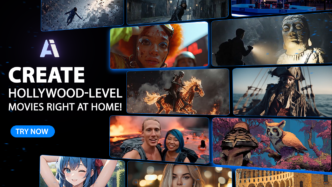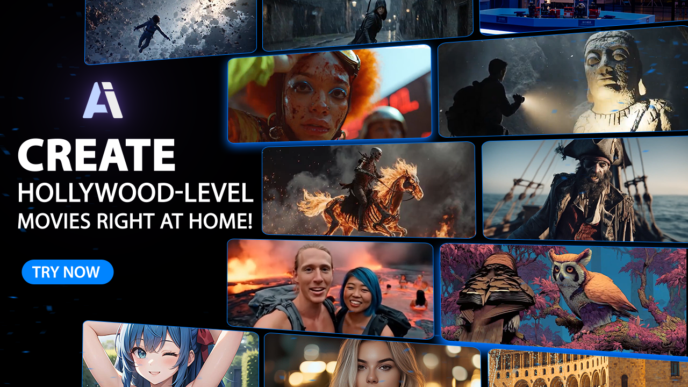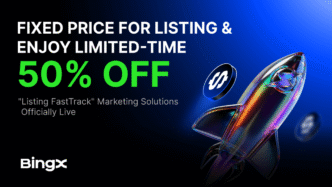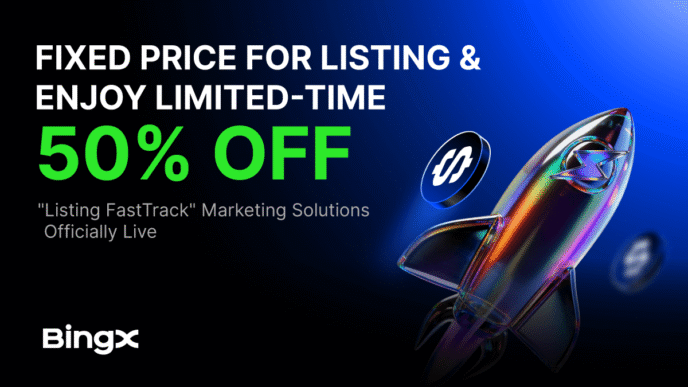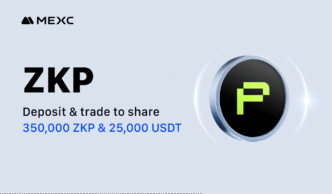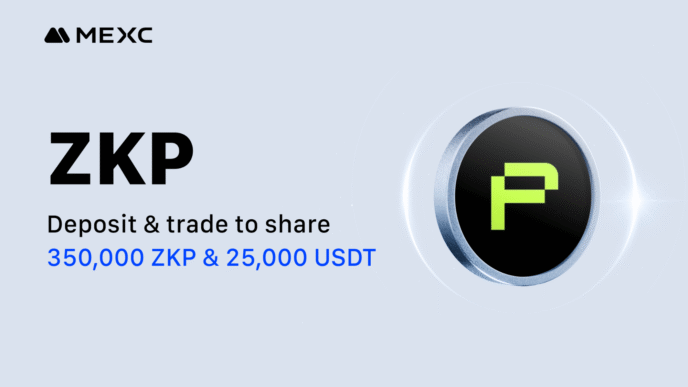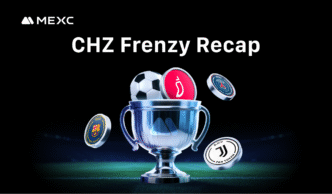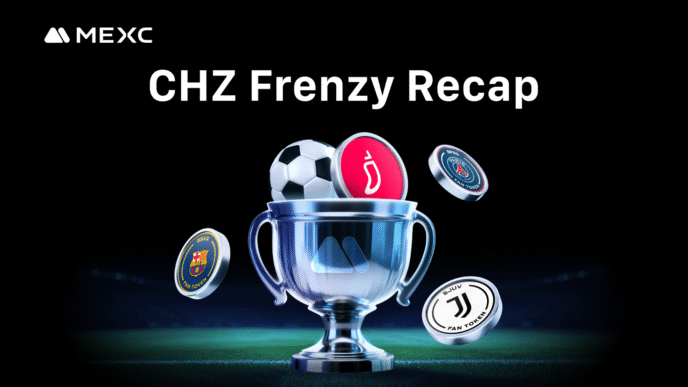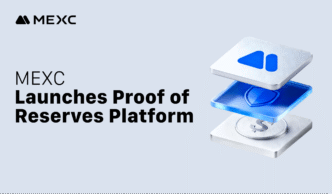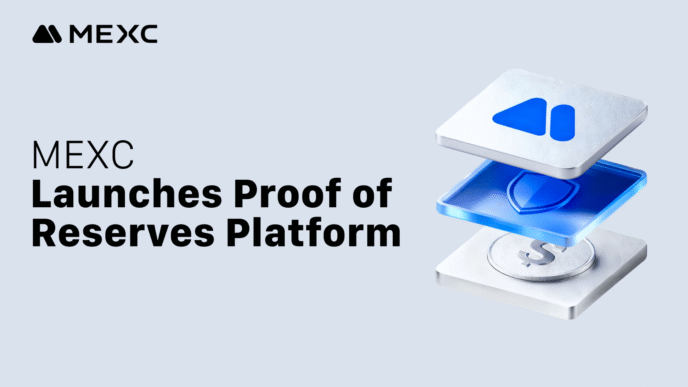Getting people to notice your event or announcement can be tough. You’ve got a great thing happening, but how do you make sure the right people hear about it? That’s where a good press release comes in, especially the headline. It’s the first thing anyone sees, so it needs to be good. We’re going to look at some press release headline examples to help you nail this part. Think of it like a movie trailer – it’s got to hook you fast.
Key Takeaways
- A strong press release headline is your first chance to grab attention and should clearly state the main point of your announcement, like a catchy event title or a significant news item.
- When writing about events, make sure your headline names key speakers or highlights what makes the event unique to draw people in.
- For crisis situations, headlines need to be clear and direct, showing that the issue is being handled while hinting at the actions being taken.
- Keep headlines short and to the point; a good press release headline example is one that tells the story quickly and makes the reader want to know more.
- Using press releases for seasonal calendars or recurring events means your headline should hint at the upcoming series or the overall theme.
1. Crafting Compelling Event Headlines
So, you’ve got an event coming up. Awesome! Now, how do you get people to actually know about it? A press release is a big part of that, and it all starts with the headline. Think of it like the cover of a book – it’s got to make someone stop and pick it up.
Your headline needs to be short, sweet, and to the point. It should tell people the most exciting thing about your event right away. What’s the main reason someone would want to go? Is it a famous speaker? A unique experience? A chance to learn something new? Focus on that one big thing.
Here’s a quick breakdown of what makes a good event headline:
- Clarity: People should know immediately what the event is about.
- Conciseness: Get to the point. No one wants to read a novel just to figure out what’s happening.
- Intrigue: Make them curious. Give them a reason to want to read the rest of the press release.
- Keywords: Use words that people might actually search for when looking for events like yours.
Let’s look at a few examples to get the idea:
| Original Headline Idea | Improved Headline | Why it Works |
|---|---|---|
| "Tech Conference Announced" | "Innovate Tomorrow: Annual Tech Summit Features AI Pioneers" | More specific, highlights key features. |
| "Local Music Festival Coming Soon" | "Summer Sounds Fest Returns with Headliner ‘The Rhythms’" | Names the event and a draw. |
| "Art Exhibit Opening" | "’Visions of the City’ Art Exhibit Showcases Local Talent" | Highlights theme and participants. |
Remember, the goal is to make journalists and readers alike say, "Huh, that sounds interesting!" and then keep reading to find out more. It’s your first, and sometimes only, chance to make a good impression.
2. Crisis Management Press Release Essentials
When things go sideways, and a crisis hits your organization, your first instinct might be to hide. But that’s usually the worst move. A well-timed and honest press release can actually help calm the storm. It’s your chance to get ahead of the story and show people you’re on top of things.
Think of it like this: a crisis press release is your official statement. It needs to be clear, direct, and show that you’re taking the situation seriously. The goal is to reassure everyone involved – customers, employees, investors – that you have a plan and are working to fix whatever went wrong.
Here’s what you absolutely need to include:
- The Facts: What happened? When did it happen? Who is affected? Be as specific as you can without causing unnecessary panic. Stick to what you know for sure.
- Your Response: What are you doing about it right now? What steps are you taking to prevent it from happening again? This is where you show accountability and action.
- Leadership Voice: Include a quote from a senior leader. This shows that the top brass is involved and concerned. The quote should sound empathetic and responsible.
- Contact Information: Make it easy for reporters to get more information. Provide a name, phone number, and email address of someone who can answer questions.
- Company Background: A brief reminder of who your company is can be helpful, especially if the crisis is newsworthy enough to attract attention from outlets that don’t usually cover you.
It’s also super important to get the tone right. You want to sound sincere, not defensive. Acknowledge the problem, apologize if necessary, and focus on the solutions. Speed matters here; the longer you wait, the more rumors can spread, and that’s rarely good for anyone.
3. The Power of Visuals in Press Releases
Let’s be real, nobody wants to read a wall of text. That’s where visuals come in. Think of them as the hook that pulls people in before they even get to the good stuff. A strong image or a short video can instantly tell a story, set the mood, and make your press release way more interesting than the next one in a journalist’s inbox.
A great visual can convey the spirit of your event and grab attention faster than any headline. It’s not just about making things look pretty; it’s about communicating effectively. For events, especially those with a strong aesthetic or a unique vibe, visuals are non-negotiable. They help paint a picture and give people a feel for what to expect.
Here’s why you should always think about visuals:
- First Impressions Matter: A compelling image is often the first thing a journalist or reader sees. It can make them pause and decide to read further.
- Telling a Story: Visuals can communicate complex ideas or emotions quickly. For an art exhibition, a photo of a striking piece works wonders. For a music festival, a shot of a crowd enjoying themselves tells the whole story.
- Making it Shareable: Good visuals get shared. If your press release looks good, people are more likely to pass it along, increasing your reach.
- Ready-Made Content: Journalists often need images to go with their stories. Providing high-quality, relevant visuals means they have one less thing to worry about, making them more likely to cover your event.
When you’re putting together your press release, don’t just slap any old picture in there. Think about what best represents your event. Is it a photo from a previous successful event? A sneak peek of a key feature? Or maybe a graphic that clearly explains something important? Whatever it is, make sure it’s high-resolution and looks professional. It’s an investment in getting your story told.
4. Brevity: The Soul of a Press Release
When you’re writing a press release, especially for an event, remember that people are busy. They’re scrolling through emails, news feeds, and probably have a million other things on their mind. Getting straight to the point isn’t just polite; it’s smart. Think of it like this: you’ve got maybe 30 seconds to convince someone your event is worth their time. If your press release is a rambling mess, they’re just going to click away.
So, what does being brief actually look like? For starters, aim for around 300 to 400 words. That’s usually enough space to cover the important stuff without overwhelming anyone. It means cutting out the fluff and focusing on what makes your event newsworthy.
Here’s a quick breakdown of what to keep tight:
- The Hook: What’s the most exciting thing about your event? Put that front and center.
- The Essentials: Who, what, when, where, and why. Get these in the first paragraph.
- The Details: Just the key information. Think speaker highlights, unique activities, or what makes this year special.
- The Call to Action: What do you want people to do next? Make it super clear.
It’s not about being short just for the sake of it. It’s about being clear and respectful of the reader’s time. A well-written, concise press release is more likely to get read and acted upon. If you’re struggling to trim the fat, try reading it aloud. You’ll often hear where it drags or where you’re repeating yourself. For more tips on making your announcements pop, check out press release subject lines.
Think about it: would you rather read a novel or a sharp, to-the-point summary? Most people, especially journalists, would choose the latter. Keeping it brief helps your message cut through the noise.
5. Identifying Your Event’s Unique Angle
So, you’ve got an event coming up. That’s great! But how do you make sure people actually care? It’s not enough to just say ‘we’re having an event.’ You need to figure out what makes your event special. What’s the hook? This is the core of getting media attention.
Think about it: what’s different about your event compared to all the others happening? Is it a world-first? A rare appearance by someone famous? Maybe it’s a new approach to an old problem, or a really unique venue. Whatever it is, that’s your angle.
Here are a few things to consider when you’re hunting for that unique angle:
- The ‘Who’: Are there any big names, local heroes, or interesting personalities involved? People are often drawn to other people.
- The ‘What’: Is there a groundbreaking announcement, a new product launch, or a special performance happening? What’s the main thing people will talk about?
- The ‘Why’: What’s the bigger picture? Is it raising money for a good cause, celebrating a milestone, or tackling an important issue? The ‘why’ can be very compelling.
- The ‘When/Where’: Sometimes the timing or the location itself is the unique part. Is it happening on a significant date, or in a place with a fascinating history?
Don’t just list what’s happening. Dig a little deeper. What’s the story behind the story? Finding that one thing that makes your event stand out is what will make journalists and attendees say, ‘Okay, I need to know more about this.’
6. Structuring for Skimmability: Bullet Points and Subheadings
When you’re trying to get your event noticed, making it easy for people to get the gist quickly is super important. Nobody wants to wade through a wall of text, right? That’s where breaking things up comes in handy. Think of it like this: you’re giving busy journalists and potential attendees a cheat sheet.
Using bullet points and subheadings makes your press release way easier to scan and digest. It helps them find the key info without having to read every single word. This is especially true for event announcements where you’ve got a lot of details to pack in.
Here’s how you can structure your press release for maximum skimmability:
- Catchy Subheadings: Break up your content with clear, descriptive subheadings. These act like mini-headlines for each section, guiding the reader. For example, you might use "Event Highlights," "Keynote Speakers," "Registration Details," or "Venue Information."
- Bulleted Lists for Key Info: Instead of long sentences, use bullet points for things like:
- Dates and times
- Special activities or features
- Ticket prices and tiers
- Contact information
- Short Paragraphs: Keep your paragraphs brief and to the point. Aim for 2-3 sentences per paragraph. This makes the text less intimidating and easier to follow.
This approach ensures that even if someone only skims your release, they’ll still walk away with the most critical information about your event. It’s all about making their job easier, which in turn makes it easier for your event to get the attention it deserves. If you’re planning a product launch, using similar clear formatting in your email announcements can also make a big difference.
7. Incorporating High-Quality Visuals
Let’s be real, nobody wants to read a wall of text. That’s where good visuals come in. Think of them as the opening act for your press release – they’re what grab people’s attention before they even get to the main story. A strong image or a short video clip can instantly convey the vibe of your event and make your announcement way more interesting.
Why bother with visuals? Well, they make your press release pop. In a world where everyone’s scrolling through endless feeds, a striking photo or a dynamic video is like a neon sign saying, "Look over here!" It’s not just about making things look pretty; it’s about telling a story without using too many words. For example, if you’re announcing a food festival, a mouth-watering shot of some amazing dish can do more than a paragraph describing the cuisine.
Here’s why visuals are a big deal:
- They catch the eye: In a crowded inbox, a visual element makes your press release stand out.
- They tell a story: A picture can show the energy, the atmosphere, or the key players of your event.
- They make it shareable: People are more likely to share content that looks good, which means more eyes on your event.
- They help journalists: Media outlets often need images to go with their stories. Providing good ones makes their job easier and increases your chances of getting covered.
When you’re picking visuals, make sure they’re top-notch. Blurry, low-resolution photos just won’t cut it. Think about what best represents your event. Is it a candid shot of happy attendees from a previous year? A professional photo of a featured speaker? Or maybe a graphic that clearly explains the event’s purpose? Whatever it is, make it count. If you’re sending out a press release for a conference, a picture of the venue or a past keynote speaker can be really effective. For a concert, a high-energy shot from a previous performance is a must.
8. The Importance of Proofreading
Okay, so you’ve poured your heart and soul into crafting this amazing press release for your event. You’ve got the killer headline, the juicy details, and those perfect quotes. But before you hit send, there’s one last, super important step: proofreading. Seriously, don’t skip this.
Think of it like this: you wouldn’t serve a fancy meal with a fly in it, right? A press release with typos or grammatical errors is kind of the same thing. It just looks sloppy. It makes you seem like you don’t really care about the details, and if you don’t care about the details of your press release, why should a journalist care about the details of your event?
Here’s why it matters so much:
- Professionalism: It shows you’re serious and organized. A clean, error-free release makes a good first impression.
- Credibility: Mistakes can make your information seem unreliable. If you can’t get the words right, can you get the event details right?
- Clarity: Sometimes a misplaced comma or a misspelled word can completely change the meaning of a sentence, leading to confusion.
A single typo can make your entire announcement look unprofessional and undermine the credibility of your event.
It’s not just about spotting spelling mistakes, either. You’re looking for awkward phrasing, sentences that don’t quite make sense, or information that’s out of place. Sometimes, reading it aloud can help you catch things your eyes might skim over. If you’ve got a colleague who’s good with words, ask them to give it a once-over too. A fresh pair of eyes can spot things you’ve missed. It might seem like a small thing, but getting it right makes a big difference in how your press release is received.
9. Strategic Timing for Event Press Releases
When you send out your press release can make a big difference in whether it gets noticed. It’s not just about what you say, but when you say it.
Think about it: if you send out a release on a Friday afternoon, it’s probably going to get buried under weekend plans and Monday morning catch-up. Most journalists are looking for news during the work week, typically Tuesday through Thursday. Sending your release early in the week gives them time to consider it, potentially schedule an interview, and fit it into their publication cycle.
Here’s a general idea of when to aim:
- Early Week (Tuesday-Thursday): This is prime time. It allows journalists to process the information and plan their coverage without being rushed by the weekend.
- Avoid Mondays: Everyone’s catching up from the weekend, and your release might get lost in the shuffle.
- Avoid Fridays and Weekends: Most newsrooms are winding down, and your announcement is unlikely to get immediate attention.
However, this isn’t a hard and fast rule. If your event has a very specific, time-sensitive hook – say, a major announcement happening on a Monday – then you’d send it out then. But for general event promotion, sticking to the mid-week sweet spot is usually your best bet. The goal is to land in front of editors and reporters when they are actively looking for stories.
Also, consider the publication’s deadline. A weekly magazine will need your release much further in advance than a daily online news site. Doing a little homework on your target media outlets can help you time your outreach perfectly.
10. Types of Event Press Releases
So, you’re putting on an event and need to get the word out. A press release is a solid way to do that, but not all event press releases are created equal. They actually come in a few different flavors, and knowing which one to use can make a big difference in how much attention you get.
Think about it: you wouldn’t announce a grand opening the same way you’d recap a charity gala, right? Each situation calls for a slightly different approach.
Here are the main types you’ll run into:
- Upcoming Closed Events: These are for when you want to invite specific people, like journalists or influencers, to an event that isn’t open to the general public. It’s like a VIP invite, but in press release form.
- Closed Events That Have Already Taken Place: Did you just host a private conference or a company retreat? This type of release is for summarizing what happened, highlighting key takeaways, and maybe sharing some behind-the-scenes info.
- Upcoming Open Events: This is probably the most common type. You’re announcing an event that the public can attend, and you want media coverage and general buzz. Think festivals, workshops, or public talks.
- Open Events That Have Already Taken Place: The event is over, but the story isn’t. This release focuses on the event’s success, its impact, and shares any cool assets like photos or videos that were captured. It’s a way to keep the momentum going and show what a great time people had.
Choosing the right type helps you tailor your message. It’s all about giving the media and the public the information they need, when they need it. For a deeper dive into crafting these, check out this guide on writing an effective press release.
11. Key Information for Event Press Releases

When you’re putting together a press release for an event, you’ve got to make sure you include all the important bits. Think of it like packing for a trip – you wouldn’t leave home without your passport, right? Your press release needs its essentials too. The goal is to give journalists and potential attendees everything they need to know, without making them dig for it.
Here’s a breakdown of what absolutely needs to be in there:
- What is the event? Give it a clear name and a brief description. What’s the main draw?
- When is it happening? Date and time are non-negotiable. Be specific, including time zones if it’s an online event or if your audience is spread out.
- Where is it located? Provide the full address for physical events. For virtual events, link directly to the platform.
- Who is involved? Mention key speakers, performers, organizers, or special guests. Their names add weight.
- Why should people care? What’s the benefit for attendees? What makes this event stand out from the crowd?
- How can people get involved? This means ticket prices, registration details, and clear links to buy tickets or sign up. If there are different ticket tiers or early-bird specials, list those out.
Sometimes, a table can really help break down complex information, especially when it comes to pricing or schedules:
| Ticket Type | Price | Includes |
|---|---|---|
| Early Bird | $75 | Full access, welcome gift |
| General Admission | $100 | Full access |
| VIP | $250 | All general access, backstage pass, dinner |
Don’t forget to include contact information for media inquiries. This is usually a name, email address, and phone number. It’s your direct line for any follow-up questions.
12. Using Press Releases for Seasonal Event Calendars
So, you’ve got a whole season of events lined up. Instead of sending out a separate press release for each one, which can get a bit much, you can actually bundle them up. Think of it like a seasonal preview. This is your chance to give people a heads-up about what’s coming, get them to mark their calendars, and maybe even set up some exclusive interviews or content down the road.
It’s a bit different from a regular event press release. The main goal here isn’t immediate coverage for one specific event, but more about planting seeds for the whole season. You want to get on people’s radar early.
Here’s a breakdown of what to consider:
- Timing is Key: Start talking about your seasonal lineup well in advance. For a big festival, this could mean months ahead. Just make sure each announcement brings something new to the table – maybe a new performer or a special activity.
- Highlight What’s New: If you have a big name or a unique angle, make sure that’s front and center. It helps people connect with the announcement right away.
- Keep it Scannable: Journalists are busy. Use bullet points or short paragraphs to make it easy for them to grab the important details quickly. Think about the ‘who, what, when, where, and why’ for each event in your calendar.
This approach helps build anticipation and keeps your events top-of-mind throughout the season. It’s a smart way to manage your outreach and ensure your audience knows what to look forward to.
13. The ‘Who, What, When, Where, Why’ of Event Promotion
When you’re getting the word out about an event, it’s easy to get caught up in the excitement and forget the basics. But honestly, the most important part of any press release, especially for an event, is making sure you cover the core questions. Think of it like this: if a journalist or potential attendee can’t quickly figure out the essential details, they’re probably just going to move on. You need to make it crystal clear what your event is all about, right from the start.
So, what are these must-have details? Let’s break them down:
- Who: Who is organizing this event? Who are the key speakers, performers, or special guests? Who is this event for? Identifying the main players and the target audience helps people connect with the event.
- What: What exactly is happening? Is it a conference, a festival, a workshop, a product launch, a charity drive? Be specific about the nature of the event and what attendees can expect.
- When: This is pretty straightforward, but crucial. What are the exact dates and times? Include start and end times, and mention if there are different sessions or phases.
- Where: Where is the event taking place? Provide the full venue name and address. If it’s an online event, give the platform and any necessary links or access instructions.
- Why: Why should anyone care? What’s the purpose or the main benefit of attending? Is there a unique angle, a problem being solved, or a cause being supported? This is your chance to sell the value.
Don’t forget to include practical information too, like ticket prices, registration deadlines, and how people can sign up or buy tickets. If you have early bird specials, definitely mention those! It’s all about giving people the full picture so they can make a decision to attend.
14. Providing Media Assets for Journalists

Journalists are busy people. They’re often on tight deadlines and appreciate it when you make their job easier. One of the best ways to do this is by giving them all the media assets they might need, right upfront. Think of it as a pre-packaged story kit.
What kind of assets are we talking about? Well, it really depends on your event, but generally, you’ll want to include:
- High-resolution images: These should be clear, well-composed photos related to your event. This could be pictures of past events, headshots of speakers, or graphics that represent your brand or theme. Make sure they’re in a common format like JPG or PNG.
- Video clips: Short, engaging video snippets can be incredibly useful. This might be a promotional trailer for your event, a brief interview with a key organizer, or a highlight reel from a previous year.
- Logos: Your event logo and any sponsor logos, provided in various formats (like vector files if possible) so they can be used in different sizes.
- Fact sheets or backgrounders: A quick document with key statistics, historical information, or important details about your organization or event.
Having a dedicated media kit or a link to a cloud storage folder with all these materials is a lifesaver for reporters. It means they don’t have to chase you for assets, and they can quickly find what they need to illustrate their story. This professionalism shows you respect their time and are serious about getting coverage.
15. Lead with High-Quality Visuals
When you’re sending out a press release, especially for an event, don’t forget about the pictures or videos. A strong visual can really make your announcement pop. Think about it – people are scrolling through tons of information all day. A great photo or a short, engaging video clip is way more likely to catch their eye than just a block of text. It’s like the cover of a book; it gives people a first impression before they even read a word.
What kind of visuals work best? It really depends on your event. For something lively, like a festival or a concert, you’ll want bright, energetic photos. If you’re announcing a more serious event, like an art exhibition or a conference, maybe a clean, professional shot of the venue or a key piece of art would be better. The goal is to give a feel for the event’s vibe.
Here’s a quick rundown of why visuals matter so much:
- First Impression: It’s the first thing people see. Make it count!
- Conveys Tone: A picture can tell a story about the event’s atmosphere much faster than words.
- Increases Engagement: Visuals break up text and make your press release more interesting to read.
- Media Friendly: Journalists often need images to go with their stories, so providing good ones makes their job easier. Having a dedicated press kit with these assets is a smart move.
Remember, the quality of the visual is key. Blurry, low-resolution images just won’t cut it. You want something that looks professional and represents your event well. If you’re unsure where to start with press releases, there are some great examples and best practices out there to guide you.
16. Clarity on Relevant Details
When you’re putting together a press release, especially for an event, you’ve got to make sure all the important bits are super clear. Nobody wants to hunt for basic information, right? Think about it like this: if you were trying to tell a friend about a cool concert, you wouldn’t just say, ‘There’s a show happening.’ You’d tell them who’s playing, when it is, where to go, and how much it costs. Your press release needs that same straightforward approach.
The core details are your event’s backbone, and they need to be front and center. This means clearly stating:
- What: The name of your event. Is it a conference, a festival, a workshop, a product launch?
- When: The exact date and time. Include the start and end times if applicable.
- Where: The physical location or, if it’s online, the platform and how to access it.
- Who: Who is organizing it? Who are the key speakers or performers? Who is the target audience?
- Why: What’s the purpose of the event? What will attendees gain from it? What makes it newsworthy?
For instance, if you’re announcing a new tech conference, you’d want to highlight:
| Detail | Information |
|---|---|
| Event Name | InnovateTech Summit 2025 |
| Date & Time | October 28-29, 2025, 9:00 AM – 5:00 PM PST |
| Location | Virtual (via InnovateTech Platform) |
| Keynote Speaker | Dr. Anya Sharma, AI Ethics Pioneer |
| Focus | The Future of Artificial Intelligence in Business |
Getting these facts right and easy to find means journalists can quickly decide if your event is a good fit for their audience. It also helps potential attendees understand what they’re signing up for. Making sure these details are accurate is a big part of crafting an effective press release.
17. Informative Headlines
Your press release headline is the first thing anyone sees. It’s like the cover of a book, you know? If it’s boring, people just keep scrolling. So, it needs to tell them what’s up, fast. Think about what makes your event special. Is it a famous speaker? A unique topic? A first-time event? That’s what you want to highlight.
The goal is to be clear and interesting, all in one short sentence. It should make a journalist or a potential attendee think, ‘Hmm, I need to know more about this.’
Here are a few ways to approach it:
- Focus on the ‘What’: Clearly state the event’s main purpose or offering. For example, ‘Annual Tech Summit Returns with Focus on AI Innovation.’
- Highlight the ‘Who’: If you have a big name involved, put them front and center. ‘Renowned Chef Alice Waters to Headline Local Food Festival.’
- Emphasize the ‘Why’: What problem does your event solve or what benefit does it offer? ‘Community Workshop Aims to Boost Local Small Business Growth.’
- Mention the ‘When/Where’ (if unique): Sometimes the location or timing is the hook. ‘Historic City Hall to Host Inaugural Arts Fair This Weekend.’
Don’t try to cram everything in. Just pick the most exciting part and run with it. A good headline is concise, factual, and sparks curiosity. It’s the gateway to the rest of your press release, so make it count.
18. Naming Keynote and Special Guest Speakers
When you’ve got some big names lined up for your event, you absolutely want to put them front and center in your press release. Think of it like this: if a celebrity chef is headlining your food festival, or a well-known author is doing a reading at your book fair, that’s a huge draw. People recognize those names, and it immediately makes your event sound more important and interesting.
Highlighting your keynote and special guest speakers in the headline or early in the release can significantly boost interest. It gives journalists a clear hook and tells potential attendees who they might get to see or hear from. Don’t just list them; briefly mention why they’re significant or what they’ll be talking about. For example, instead of just saying ‘John Smith will speak,’ try ‘Award-winning author John Smith to discuss his latest novel.’
Here’s a quick breakdown of why this is so important:
- Credibility Boost: Well-known speakers lend an air of authority and prestige to your event.
- Audience Attraction: People often attend events specifically to hear from their favorite personalities.
- Media Hook: Journalists are more likely to cover an event if it features recognizable figures.
If you have multiple speakers, consider a small table to list them along with their affiliation or a very brief descriptor. It keeps things tidy and easy to scan.
| Speaker Name | Title/Affiliation | Key Contribution/Topic |
|---|---|---|
| Dr. Evelyn Reed | Chief Scientist, AstroTech Inc. | Keynote: The Future of Space Exploration |
| Marcus Bellweather | Renowned Historian | Special Guest: Local History Deep Dive |
| Anya Sharma | CEO, Innovate Solutions | Panelist: Entrepreneurship in the Digital Age |
19. Clear Calls to Action for Attendance and Registration
So, you’ve got this amazing event coming up, and you’ve written a press release that’s practically singing. But wait, did you actually tell people what to do next? That’s where the call to action (CTA) comes in. It’s like the friendly nudge that guides your reader from ‘interested’ to ‘actually going’. Without a clear CTA, your press release is just a story, not an invitation.
Think about it: people are busy. They read your release, they’re intrigued, and then… they move on. You need to make it super simple for them to take the next step, whether that’s buying a ticket, signing up, or just learning more.
Here’s how to make your CTAs work harder:
- Be Direct: Don’t beat around the bush. Use action verbs. Phrases like "Register Now," "Get Your Tickets," or "Learn More" are your best friends.
- Provide All the Details: If people need to buy tickets, tell them the price. If there are different ticket tiers, list them out. Make it easy to see what they’re getting.
- Link Clearly: Make sure your links are obvious and work perfectly. A broken link is a guaranteed way to lose potential attendees.
| Ticket Type | Price | What’s Included |
|---|---|---|
| Early Bird | $75 | Full access, welcome drink |
| General Admission | $100 | Full access |
| VIP Pass | $250 | Full access, backstage tour, meet-and-greet |
Don’t forget to include the event website and any relevant social media handles so people can find you easily. It’s all about removing any friction between someone wanting to attend and them actually doing it.
20. Writing for Humans: Conversational Language
Okay, let’s talk about making your press releases sound like a real person wrote them, not some robot trying to sell you something. Nobody wants to read a stuffy, formal announcement that sounds like it was pulled straight from a legal document. Think about it: when you’re chatting with a friend about something cool happening, you don’t use fancy words or talk in circles, right? You get straight to the point, maybe with a bit of excitement.
The goal here is to connect with people, plain and simple. You want them to feel like they’re getting the inside scoop, not being lectured. So, ditch the corporate jargon. Instead of saying "We are pleased to announce the synergistic integration of our new product line," try something like, "We’re excited to launch our new products!" See? Much better.
Here are a few things to keep in mind:
- Use "you" and "we": Directly address your reader. It makes them feel involved. Instead of "Attendees will find valuable information," say "You’ll find valuable information."
- Keep sentences varied: Mix short, punchy sentences with slightly longer ones. It keeps the rhythm interesting and prevents your reader from zoning out.
- Tell a story (briefly): People connect with stories. Even a short anecdote or a relatable scenario can make your announcement more memorable.
Think about this: if your event is a fun music festival, your press release should sound energetic and exciting. If it’s a serious conference about, say, sustainable farming, it should sound knowledgeable and trustworthy, but still approachable. It’s all about matching the tone to the event itself. You wouldn’t talk about a comedy show the same way you’d talk about a medical breakthrough, would you? The language you use is a big part of setting that right vibe before anyone even shows up.
21. Providing Context and Expert Quotes
When you’re putting out a press release, especially for an event, just stating the facts isn’t always enough. You need to give people a reason to care, and that’s where context and quotes come in. Think of it like telling a story – you need to set the scene and let people hear from the main characters.
Context helps explain the ‘why’ behind your event. Why is this happening now? Why is it important? For example, if you’re launching a new product, the context might be the problem it solves for consumers or a gap in the market it fills. If it’s a community event, the context could be a local need or a celebration of a specific heritage.
And then there are the quotes. These are your golden tickets to adding personality and authority. Quotes from key people involved – like the event organizer, a featured speaker, or even a satisfied participant from a previous year – can really bring your press release to life. These quotes should sound genuine and offer a unique perspective that the rest of the text might not capture.
Here’s a quick look at what makes a good quote:
- Adds personality: Does it sound like a real person talking?
- Provides insight: Does it offer a new angle or a deeper thought?
- Builds credibility: Does it come from someone with authority or experience?
- Explains the ‘why’: Does it help readers understand the event’s significance?
For instance, instead of just saying ‘We’re excited about the event,’ a quote might be: ‘We’ve seen a real need for a space where local artists can connect and share their work. This festival is all about building that bridge and celebrating the incredible talent right here in our town,’ says Maria Rodriguez, the festival director. See? Much more engaging.
Don’t just stick to one type of quote, either. Mix it up! You might have a quote from the main organizer about the vision, and another from a keynote speaker about what attendees can expect to learn. This variety keeps the reader interested and shows different facets of the event.
22. Including Reviews and Previous Iterations
People like to know what they’re getting into, right? So, if your event has a history, don’t be shy about mentioning it. Past successes can really help build excitement for what’s coming up. Think about it: if an event has been a hit before, chances are it’ll be a hit again.
Including positive feedback from previous attendees or notable reviews can significantly boost credibility and encourage new people to sign up. It’s like a built-in endorsement that tells journalists and potential attendees that your event is worth their time and attention.
Here’s how you can weave in past performance:
- Highlight Key Metrics: If you have numbers that show growth or success, use them. For example, "Last year’s conference saw a 25% increase in attendance" or "Our workshop received an average rating of 4.8 out of 5 stars."
- Quote Past Attendees: A short, impactful quote from someone who loved the event can be very persuasive. "It was an inspiring experience that I’ll never forget," said Sarah K., a participant from 2024.
- Mention Awards or Recognition: If your event or a related aspect has won awards or received special mentions, definitely include that information. It adds a layer of prestige.
For instance, if you’re announcing the return of an annual festival, you might say something like:
"Following the overwhelming success of last year’s festival, which drew over 10,000 attendees and was hailed by local media as ‘the event of the summer,’ we are thrilled to announce the dates for [Festival Name] 2025. Building on last year’s momentum, this year promises even more exciting performances and interactive experiences."
This approach not only informs but also reassures potential attendees and media about the event’s established quality and appeal. It’s a smart way to build anticipation and demonstrate a track record of success, much like how companies announce their earnings results to show their financial standing.
23. Speaker Line-ups and Bios
When you’ve got some interesting people lined up to speak at your event, it’s a good idea to let people know who they are. This is especially true if you have a keynote speaker or someone with a bit of a name. It gives people a reason to come, you know?
Think about it: if you’re going to an event, you probably want to know who you’ll be listening to. Are they experts? Are they famous? What’s their deal?
Here’s a quick rundown of what to include:
- Keynote Speakers: These are your big draws. Mention their names prominently and give a brief, punchy bio that highlights why they’re the person to listen to.
- Special Guests: Anyone else who’s adding some serious star power or unique insight should get a mention too. Again, keep the bios short and sweet.
- Panelists/Presenters: For larger events, you might have a whole lineup. A list with short descriptions works well here.
Including bios helps build excitement and shows the quality of your event. It’s not just about the event itself, but the people who are making it happen. It adds a layer of credibility and gives attendees something concrete to look forward to.
24. Embedding Multimedia
So, you’ve got this great press release all written out, but it feels a little… dry. That’s where embedding multimedia comes in. Think of it like adding flavor to a meal; it just makes everything more interesting and appealing. Including visuals and videos can really make your announcement pop and grab a journalist’s attention.
It’s not just about making things look pretty, though. Good multimedia can actually help tell your story more effectively. A short video clip can show the energy of your event, or a series of photos can highlight key moments or products. This gives reporters a much better feel for what you’re promoting than just words on a page.
When you’re thinking about what to include, consider these points:
- Relevance is Key: Make sure the media you choose directly supports your message. Don’t just throw in a random picture; it should add context or emotion.
- Quality Matters: Use high-resolution images and clear video. Blurry or pixelated content looks unprofessional and can make your whole release seem less credible.
- Keep it Accessible: While you want good quality, make sure your files aren’t too large. Nobody likes waiting forever for a page to load. There are ways to optimize your media for the web.
Think about what a reporter would need to quickly understand and share your story. Providing a few different options, like a hero image, a couple of action shots, and maybe a short explainer video, can be super helpful. It saves them time and makes your press release a one-stop shop for information.
25. Boilerplate and Company Details and more
So, you’ve got your amazing event details all sorted, the speakers are lined up, and you’re ready to tell the world. But wait, there’s one more bit that’s super important, especially for journalists trying to figure out who you are: the boilerplate and company details. Think of it as your organization’s quick intro, the elevator pitch that tells everyone what you’re all about.
This section is pretty standard and usually stays the same across all your press releases. It’s not about the specific event you’re announcing right now, but rather a snapshot of your company or organization. It helps people understand the context of your announcement. It’s your chance to make a good first impression and provide essential background information.
What should you include? Well, it’s not a novel, so keep it brief. Aim for a paragraph or two, max. Here’s a breakdown of what typically goes in:
- Who you are: Briefly describe your organization’s mission, what you do, and your main area of focus.
- What makes you unique: Highlight any key achievements, your history, or what sets you apart from others in your field.
- Your impact: Mention your target audience, the community you serve, or the broader significance of your work.
And don’t forget the practical stuff. You absolutely need to include clear contact information. This is usually a dedicated media contact person – someone from your PR team or a spokesperson. They’re the ones journalists will reach out to if they need more info, want to schedule an interview, or have follow-up questions. Make sure to list their name, title, email address, and phone number. It’s also a good idea to include your organization’s website and any relevant social media handles.
Here’s a quick look at what a basic boilerplate might cover:
| Element | Description |
|---|---|
| Organization Name | The official name of your company or group. |
| Mission Statement | A concise summary of your purpose and goals. |
| Key Activities | What your organization does on a day-to-day basis. |
| Target Audience | Who your products, services, or initiatives are for. |
| Contact Person | Name and title of the media contact. |
| Contact Details | Email address and phone number for the media contact. |
| Website/Social | Links to your main website and active social media profiles. |
Putting this all together at the end of your press release makes it super easy for reporters to get the full picture and know exactly who to talk to. It shows you’re organized and ready to engage.
Wrapping It Up
So, we’ve looked at a bunch of ways to make your press release headlines pop. It’s not always easy, and sometimes it feels like you’re just guessing what will grab someone’s eye. But remember, the goal is simple: get people to stop scrolling and actually read what you have to say. Whether you’re announcing a new product, a big event, or even dealing with a tricky situation, a strong headline is your first, and maybe best, chance to make an impression. Keep practicing, try out different ideas, and don’t be afraid to be a little bold. Your story deserves to be heard, and a great headline is the key to opening that door.
Frequently Asked Questions
What is the main goal of a press release headline?
The main goal is to grab people’s attention right away and make them want to read more about your event. It should quickly tell them the most exciting thing about what’s happening.
Why is it important to include visuals in a press release?
Pictures or videos make your press release more interesting and can help show what your event is all about before someone even reads the words. Journalists often like having visuals to use in their stories.
How short should a press release be?
It’s best to keep it brief, usually between 300 and 400 words. Think of it like telling a story quickly and clearly, getting straight to the important parts without extra fluff.
What are the most important details to include?
You need to clearly state the ‘who, what, when, where, and why’ of your event. This includes the event name, date, time, location, and what the event is for. Also, include how people can get tickets or register.
Should I use fancy words in my press release?
No, it’s better to write in a way that sounds natural and easy to understand, like you’re talking to a friend. Using everyday language makes it more relatable and less like a boring official document.
When is the best time to send out an event press release?
You should send one when you first announce the event and start selling tickets. You might also send another one after the event to share highlights and photos, especially if it was a big success.





